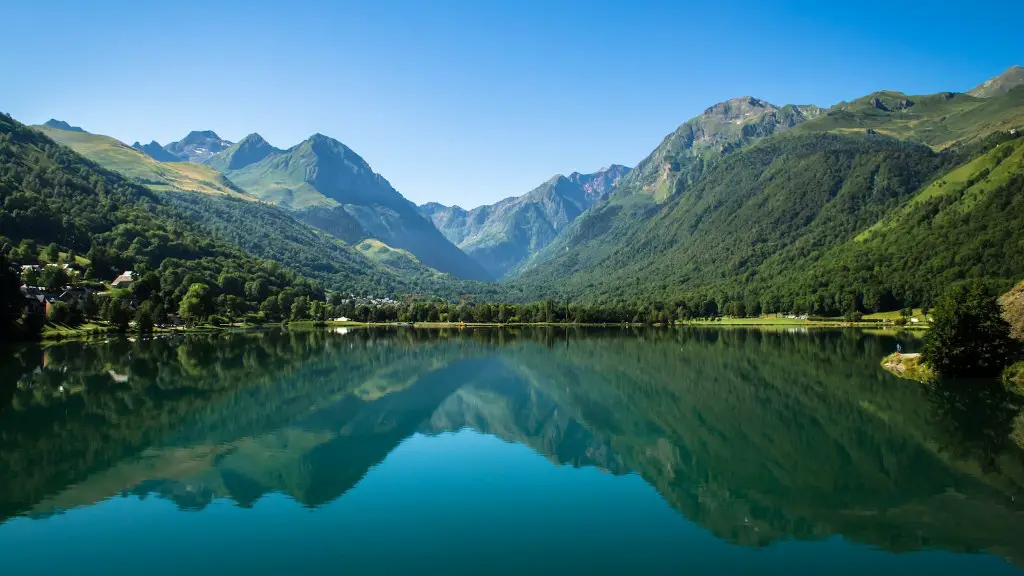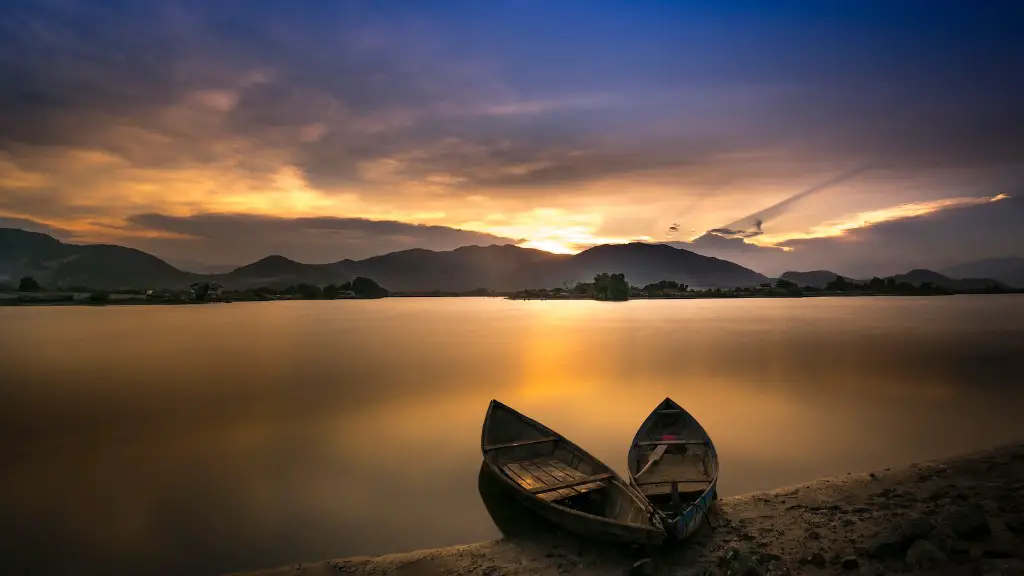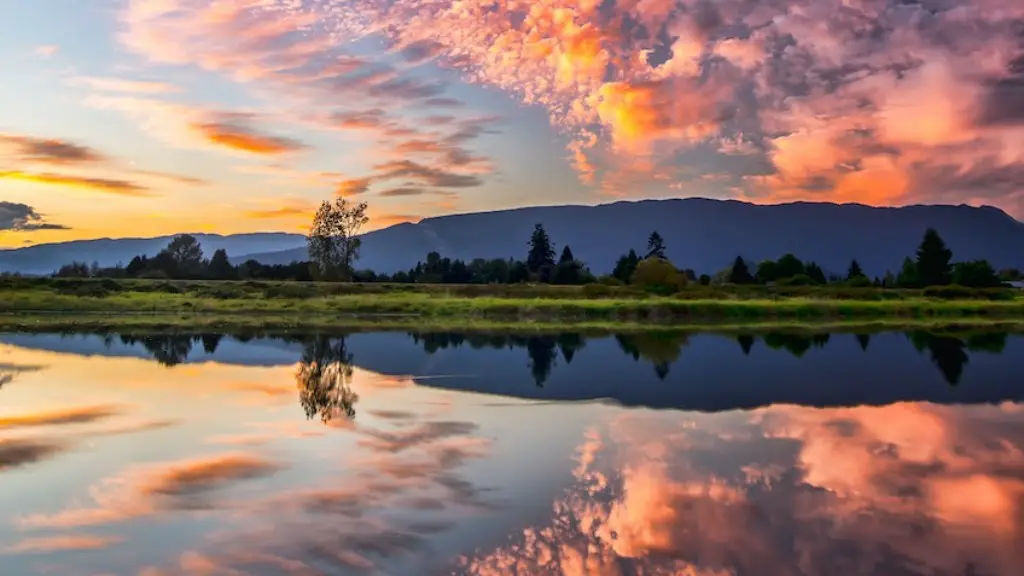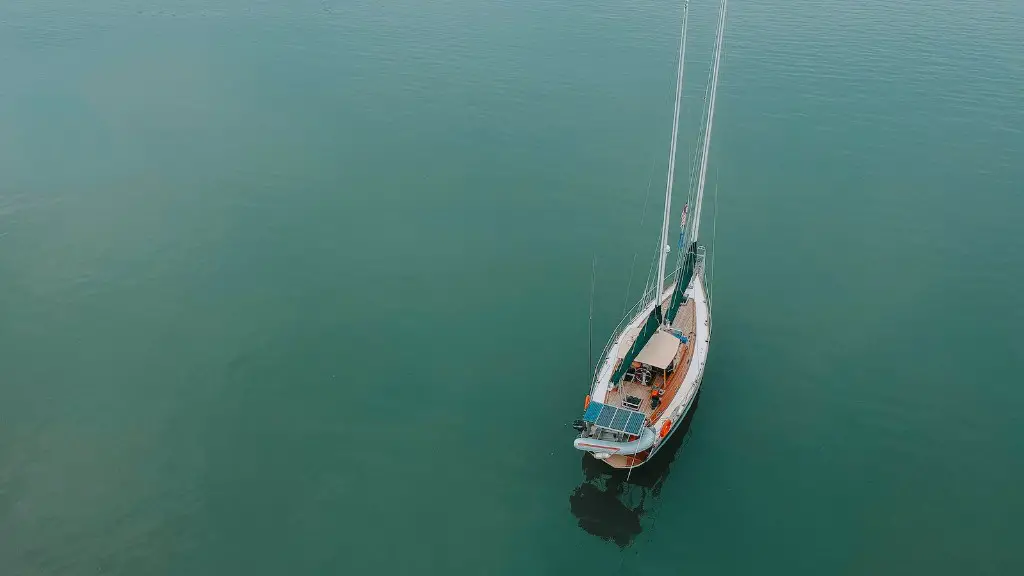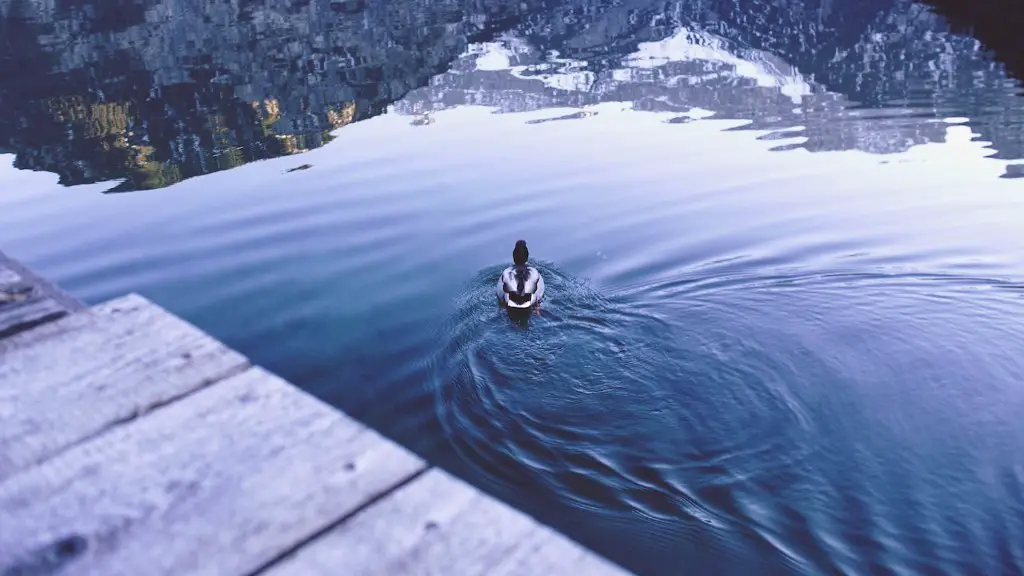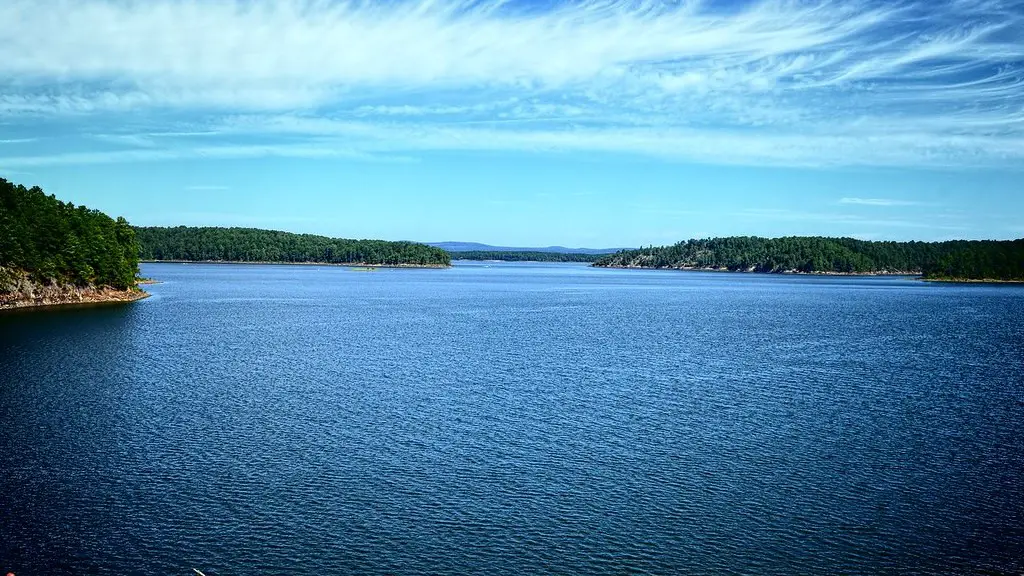Spanning an area of 31,700 square miles and as the largest freshwater lake in the world by surface area, Lake Superior is truly a marvel of nature. Located on the border of the United States and Canada, the lake has been used by indigenous cultures for centuries, and is home to a variety of species including over 80 species of fish. The lake is over 500 miles long, reaching depths up to 1.300 feet; and its waters hold approximately 3 quadrillion gallons of water, enough to cover all of North and South America in ten feet of water.
The immense size of Lake Superior has resulted in its nickname “Gitchee Gumee” in the Ojibwa language, meaning “big water.” Geographers believe that the lake was formed by glacial activity over a million years ago, while some even speculate that an ancient meteor impact caused its formation. Whatever the cause, the lake remains in motion today. Its powerful waves have been known to reach up to 22 feet in height.
In addition to its awesome natural power, Lake Superior also has a profound impact on the environment and the lives of people around it. Native peoples value the lake for its spiritual significance, which is based on the belief that its waters can bring good luck. It is also a major component of the Great Lakes, which are connected to the Atlantic Ocean and play a key role in regulating seafaring trade. In fact, according to experts from the Michigan State Water Center, the Great Lakes affect the lives of 40 million people from 8 US states and 2 Canadian provinces.
The presence of Lake Superior has also had a major impact on local fishing industry. It is home to a wide variety of popular freshwater fish species, like northern pike, walleye, and lake trout, which provide countless jobs and bring in an annual revenue of over 32 million dollars. In addition, the lake is a major habitat for a variety of birds, plants, and animals. It is the only known habitat for the endangered Kirtland’s Warbler and is a stopover for large numbers of migrating ducks and geese each year.
Lake Superior holds so much power and energy that some believe it symbolizes the world’s strength and beauty. From its natural might to its cultural importance, Lake Superior is an incredible testament to the power of our planet’s resources and the beauty of its landscapes. Its immense size and influence make it worthy of reverence.
Sporting Opportunities for Visitors
It’s no wonder that Lake Superior attracts more than 3.2 million visitors to its shores each year. They come for a variety of recreational activities, including sailing, boating, fishing, and camping. Visitors can also enjoy breathtaking views of the lake from the North Shore in Minnesota, the Upper Peninsula of Michigan, and the province of Ontario. Whether it’s a romantic getaway or an adventure-filled family vacation, the lake has something to offer everyone. One especially popular activity is watching the lake’s famous ships and lighthouses, most of which are more than a hundred years old. Boaters seeking a real challenge can attempt to cross the lake in its entirety, a journey that takes around 23 hours and covers over 200 miles of open waters.
Not surprisingly, Lake Superior is also a prime destination for outdoor sports enthusiasts. It is home to some of the world’s best kayaking and canoeing spots, many of which are accessible from the North Shore. The lake is also a great destination for windsurfing and sailing. The best times to experience these sports are during the early summer and late fall, when the lake is relatively calm.
Lake Superior is also a popular destination for fishing. The lake is home to a wide variety of fish species and boasts a large population of walleye, northern pike, rainbow trout, and muskellunge. There are many recreational fishing opportunities for both experienced anglers and novice fishers alike, making it a great spot for family fishing trips. Visitors should make sure to know the relevant regulations that apply to the area, which vary depending on the season.
Environmental Role of the Great Lakes
As one of the five Great Lakes, Lake Superior plays a pivotal role in the environmental stability of the region. Among its many contributions, the lake influences the hydrological cycle, helps to maintain water quality, and functions as a natural buffer against the climate crisis. It also helps to sustain healthy populations of plants and animals in its watershed.
Lake Superior is part of a vast ecosystem that is intricately connected to other systems within the Great Lakes region. In combination with the other Great Lakes, Lake Superior helps to determine the climate and air quality of the wider region. For example, the lake’s waters are key components in regulating extreme temperatures, routing snowmelt from the mountains, and providing an important buffer against flooding. It also plays a major role in the regional agriculture industry, providing an important source of water for irrigation.
The lake also helps to maintain water quality. It is home to a wealth of aquatic life and plants, and its vast stores of oxygen help to support this life. Furthermore, Lake Superior serves as a source of fresh drinking water for the people of the Great Lakes region. Filtration systems and water treatment plants work to remove most pollutants and contamination, while leaving essential minerals like iron and magnesium intact.
Lake Superior’s Shifting Waters
The immense size of Lake Superior makes it susceptible to periodic changes in its water levels. During the 20th century, the lake’s waters have risen and fallen multiple times, due partly to changes in precipitation and other environmental factors. In the last decade, the lake has experienced the highest water levels in its recorded history, due to increased rainfall and decreased evaporation.
The frequent changes in Lake Superior’s water levels have had a variety of impacts on the environment as well as local businesses. As the waters have risen, they have caused flooding, erosion, and displacement of local communities. In addition, docks, beaches, and shorelines have been severely damaged or destroyed. On the other hand, some have welcomed the rising water levels as they have permitted large ships to sail farther inland. This has made it easier for large-scale agricultural, mining, and shipping companies to access remote areas that were previously inaccessible.
In order to preserve and protect Lake Superior, multiple conservation efforts are underway. Governments and conservationists are working to develop and enforce regulations for forestry and fishing to promote sustainability. They are also creating policies to prevent pollution and manage usage by large-scale shipping companies. In addition, local communities and businesses are working to protect endangered species and restore the lake’s ecosystems.
Benefits for Local Communities
The presence of Lake Superior brings a number of benefits to the communities that surround it. Tourism is a major industry in the Great Lakes region and the lake’s beautiful and varied landscapes offer a great draw for visitors. Local businesses benefit as people come to take advantage of the lake’s many recreational activities, including sailing, boating, fishing, and camping. In addition, many people come to simply enjoy the lake’s stunning views and serene atmosphere.
In addition to the economic benefits, the lake also provides spiritual and emotional sustenance to the people of the Great Lakes region. For native peoples, the lake has great spiritual significance, and its waters are seen as having the power to bring good luck. It is also home to a wide variety of species, creating an amazing spectacle for visitors and residents alike.
The presence of Lake Superior in the Great Lakes region is something to be celebrated, as it has brought countless benefits to the area. From its tremendous natural power to its importance for local businesses, the lake is a gift that should be protected and appreciated.
Plant and Wildlife Diversity
Lake Superior is home to a diverse array of plant and animal species. The lake’s waters are home to over 80 species of fish, including herring, whitefish, lake sturgeon, and the occasional lake trout, which is the only species of salmon native to the Great Lakes. The lake also supports an abundance of amphibians, reptiles, and birds, many of which can be seen from the North Shore of Minnesota and the Upper Peninsula in Michigan. An especially popular bird among visitors is the Bald Eagle, which is one of the lake’s few year-round residents.
Lake Superior’s plants and algae are just as diverse as its wildlife. The lake contains a variety of aquatic and terrestrial plants, including several endangered species. These plants provide food and habitat for the lake’s wildlife, while also helping to combat the effects of climate change. Algae, meanwhile, are a major source of oxygen for the lake’s waters and play an important role in the food chain.
Lake Superior’s immense beauty is further enhanced by its plants and wildlife, which makes it a magnificent destination for ecotourists. Visitors are encouraged to take the time to appreciate the lake’s natural wonders, not only as part of a memorable vacation but also as a reminder of the importance of protecting our planet’s natural resources.
Human Impact on Lake Superior
Unfortunately, the human impact on Lake Superior has had far-reaching repercussions. Over the past century, the lake has experienced increased pollution and contamination due to sewage, agricultural runoff, industrial waste, and toxin-producing invasive species. Although there have been efforts to reduce pollution and regulate chemical contaminants, the lake’s water quality has been steadily declining.
In addition to pollution, humans have also impacted Lake Superior’s environment by overfishing and introducing invasive species. Overfishing has had a significant impact on the lake’s food chain, while invasive species such as zebra mussels and quagga mussels have disrupted native aquatic ecosystems. These changes have diminished the lake’s biodiversity and decreased the number of fish species.
The human impact on Lake Superior has also had a devastating effect on local wildlife. Hunting, fishing, and trapping of animals has not only reduced the lake’s population of mammals, birds, and reptiles, but has also caused irreparable damage to the lake’s ecosystems.
Despite the negative effects of human activity, Lake Superior still remains an awe-inspiring example of nature’s beauty. Restoration efforts are underway to preserve and enhance the lake’s ecosystems, while regulations and education campaigns aim to reduce its pollution. We can only hope that continued efforts will help to ensure the long-term sustainability of this incredible body of water.
